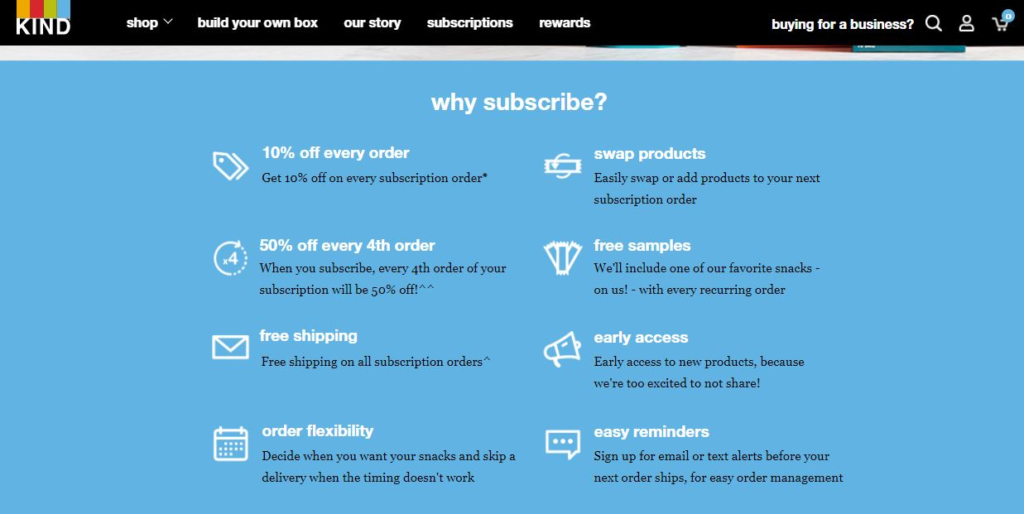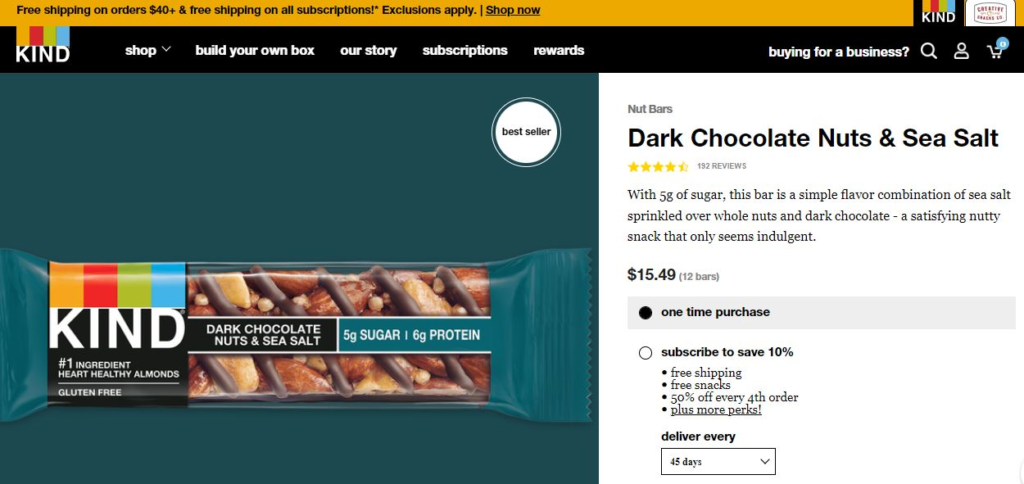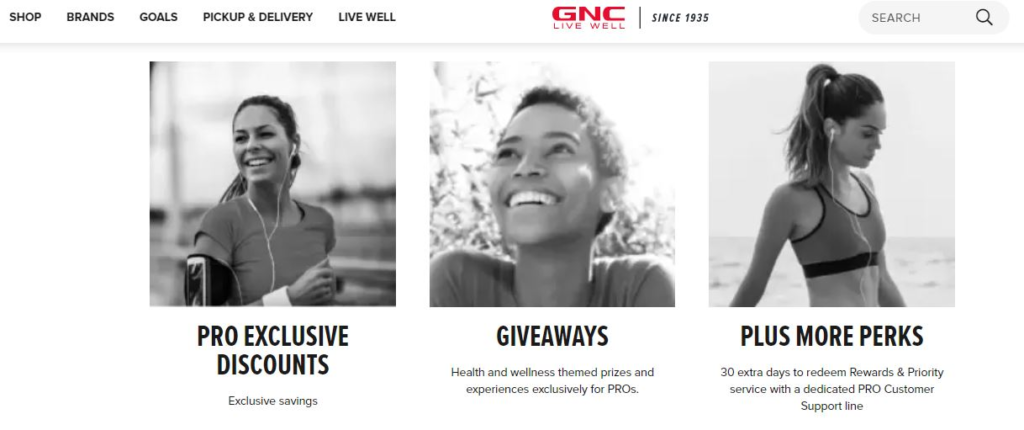The Complete Guide to eCommerce Subscriptions
- The subscription based business model: What is it and is it right for you?
- Introduction: The rise of eCommerce subscriptions
- The eCommerce subscription model: Understanding its 3 types
- 5 Benefits of subscription services
- 9 Crucial subscription eCommerce platform capabilities
- Your guide to the essential subscription integrations and apps
- How to start a subscription business in 6 steps
- 5 Subscription model best practices
- Take the effort out of subscriptions with Ordergroove
Customer Stories
How to start a subscription business in 6 steps

Furtuna Skin, a regenerative beauty brand, launched in 2019 to rave reviews and quickly built a loyal customer base. Soon after, they launched subscriptions to take advantage of their rapid success and ensure their most loyal customers always had access to the products they loved. But things didn’t go as planned.
Furtuan Skin’s subscription provider delivered a poor customer experience that hurt enrollment and did little to combat churn. Instead of their subscriptions growing rapidly as they had hoped, their experience struggled.
However, once Furtuna Skin migrated to a new subscription solution that delivered a premium subscriber experience from sign-up to order management, they started to see the growth they were looking for. In three months, Furtuna Skin boosted their subscriber base by 103%, reduced subscriber churn to 50%, and increased subscription revenue by 100%
If you don’t adequately plan the launch of your subscription experience, you risk experiencing what Furtuna Skin went through. Here are six steps on how to start a subscription business and ensure a successful launch.
Step 1: Evaluate your market fit
UnivDatos Market Insights estimates that the global subscription market will hit $2.6 trillion by 2028, up from $34.7 billion in 2020. With so much growth and competition, you should evaluate your product, niche, and value proposition to make sure your subscription business can compete. Knowing how to setup a subscription service against the competition is an important first step.
While you can create a subscription experience for most types of products, items that are consumable and need replacing on a recurring basis are best. If you offer a service – like a gym membership – you must reward frequent use in some way.
Next, create a detailed Strengths, Weaknesses, Opportunities, and Threats (SWOT) analysis and make a list of your competitors. For example, it might be difficult to stand out in a beauty market dominated by L’Oréal and Estée Lauder. You may need to hire a market research firm such as Nielsen or Gartner to help assess your subscription’s viability.
Step 2: Choose your subscription business model
When starting a subscription business, your type of subscription model must balance the nature of your product or service with the experience you want your target audience to have.
Subscribe and Save
Perhaps the most common subscription model, subscribe and save ships the same consumable product on a regular basis. Because they’re purchasing at a regular cadence, buyers generally get a discount on the items. Frequently used items like diapers, coffee, makeup, and razors tend to be a great fit for this type of subscription model.
Curation
The curation subscription box business model is for entrepreneurs who wish to sell a wide variety of products to potential customers who like the element of surprise. Claire’s Cdrop is one example of this type of model. The company sends a curated box of jewelry and makeup each month based on subscribers’ ages.
Membership
Membership is right for your business if you want subscribers to pay for access to benefits or services unavailable to non-subscribers. For instance, Halfords, a UK automotive and cycling retailer, offers a membership experience where shoppers receive access to vehicle checkups and parts discounts.
Step 3: Determine your subscription program’s incentives
Carefully chosen incentives help convince subscribers to join and remain members. A 2020 McKinsey survey showed that 62% of customers become subscribers because they seek “good value for price.”
While discounts and freebies can hook subscribers into joining, they can eat into your profit margins. Your incentives should also be consistent with, or better than, those offered by your competition.
KIND Snacks offers subscribers 10% off and free shipping on each order, in addition to free samples in each box.

They also keep subscribers engaged with the anticipation of receiving early access to new products.
Step 4: Develop an enrollment marketing strategy
Given the rising number of subscription businesses, your enrollment strategy must make it both easy and enticing to become a subscriber. The incentives you created in the previous step play a key role in customer acquisition.
Create a website promotion plan
Your online storefront should move new customers into the subscription funnel. Subscribers are some of your most valuable customers because of the recurring revenue they generate, so they should be your top priority.
Say you have products available for both one-off purchases and subscriptions. Your website should clearly indicate why subscribing is a better deal.
Natural beauty brand Tata Harper is upfront about their subscription incentives — and the convenience of setting shipment cadence — on their product pages.

Better yet, make the subscription the default choice at checkout as a more subtle hint of its value.
Streamline your in-store plan (if you need one)
If you maintain a brick-and-mortar store, you’ll want to make it easy for customers to sign up for your subscription experience while they’re visiting your establishment. Train your staff about your subscription experience’s value to your customers, how to handle common objections, and how to enroll customers.
A common objection to a subscription is that the buyer is travels often and doesn’t want their subscription to arrive when they aren’t there to claim it. In response, your staff would let the customer know that they have full control over their subscription, including when the order arrives.
You should also ensure subscribers receive the same benefits in-store as they would online, such as discounts, gifts, free samples, and exclusive access to products.
Empower existing customers to spread the word — and become subscribers
With the right messaging, your existing one-off buyers can become some of your first subscribers. They can also become a powerful customer acquisition channel.
Create a campaign across your customers’ preferred channels — email, SMS, direct mail — alerting them to the subscription. Consider offering them a deeper discount on their first shipment.
Sweeten the deal by offering additional perks, such as a free gift, if they refer a friend who becomes a subscriber.
Step 5: Develop a retention strategy
Subscriber acquisition is only half the battle. The next step is to provide sufficient value to keep them from churning.
Give subscribers control with a dedicated portal
Subscribers need the flexibility to adapt their subscriptions to their changing needs. In 2020, McKinsey found that 18% of survey respondents stuck with their subscriptions because of their flexibility.
For example, if a subscriber doesn’t need as much coffee one month because of a trip, they need the option within the subscription portal where they can skip a shipment.

Sometimes subscribers need to skip more than one shipment in a row. Give them the added convenience of pausing shipments for a set period of time. Otherwise, they may be forced to churn.
Consider a retention rewards program
Your subscription incentives should include retention perks. Reward subscribers for their longevity or craft ongoing experiences that give them something to anticipate.
Returning to KIND Snacks, they promise subscribers 50% off every fourth order. They make the perk obvious on every eligible product page.

Subscriber retention incentives don’t always need to be discounts. GNC’s myGNC Pro membership promises fun giveaways and exclusive events to keep subscribers engaged.

For more complicated rewards programs involving points, you may need to integrate with a third-party platform such as Yotpo.
Be proactive in winning churned customers back
Despite your best efforts, some subscribers will churn. But churn doesn’t have to mean the end of the customer relationship. Before you launch the subscription, devise a strategy for winning customers back.
If the ability to pause subscriptions doesn’t work, try winning them back with an email campaign that offers a special incentive if they return. In any case, send a survey to the subscriber asking why they churned. Their responses might lead to improvements in your overall experience.
After surveying their churned members, CBDistillery made improvements that led to an 89% retention rate.
Step 6: Create a dashboard to monitor progress
Once you launch and start a subscription business, you’ll need to track how your subscription business is progressing and adjust accordingly. Create a dashboard that allows you to see key metrics at a glance and make strategic business decisions from the get-go. Start with these three KPIs.
Gross merchandise value (GMV)
GMV measures the monetary value of the goods and services you sell in a given period. Because you move more product through subscriptions thanks to recurring orders, this metric should improve as you add subscribers.
GMV = Amount of merchandise sold x price charged to customers
Buyer to subscriber ratio (BSR)
BSR is critical if you manage one-off and subscription businesses. If your subscription enrollment strategy is working, you should see the number of subscribers grow month-over-month relative to one-off buyers.
BSR = (number of buyers / number of subscribers) x 100
Active subscribers (AR)
An active subscribers metric is exactly what it sounds like. You’ll want to keep track of the total number of subscribers who receive orders from your brand on a recurring basis.
AR = (subscriber increase from previous month / subscribers in previous month) × 100
Listen to your customers as you start a subscription business
You may follow the six steps above on how to start a subscription service, but ultimately, your customer base will let you know where you need to improve. Don’t hesitate to survey them periodically and use their feedback to refine your acquisition and retention strategies.
To learn best practices for marketing your subscription after you launch, click here to read our next article.